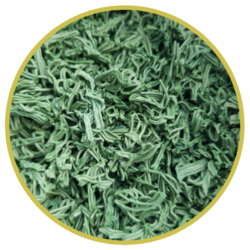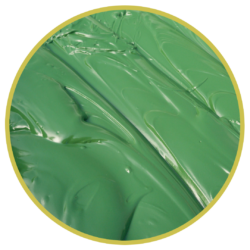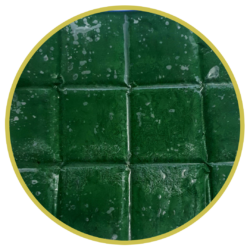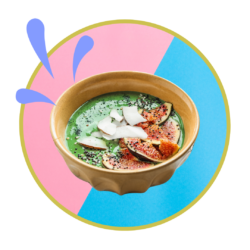Need help on how to keep and consume our spirulina?
We’ve got you covered – Discover all you need to know about how to keep and consume our spirulina!

100% pure spirulina

Non-GMO

Vegan friendly

Gluten free

Dehydrated spirulina
Store in a cool, dry place, away from direct sunlight, such as a kitchen cupboard. When stored properly, the spirulina can last for as long as 2 years! ♥

Fresh raw spirulina
Keep it in the refrigerator at 1°C to 5°C to keep it fresh for 7 to 10 days (and up to 15 days in some cases!). Remember, avoid placing it in the fridge door as it’s usually warmer, especially when opened frequently.

Frozen raw spirulina
Keep frozen at -18°C. After thawing, store between 4°C and 6°C, and consume within 24 hours. It’s advisable to thaw before use. Our frozen spirulina can be stored for up to 9 months!

Eat it directly
To maximize nutrient absorption, consume spirulina on an empty stomach. Wait 15 minutes for better absorption, as solid food can slow it down.

Add it to your meal
Spirulina is versatile and can be added to a variety of dishes, but it’s best to avoid adding it to heated dishes, as heat can diminish its nutrient content.

Believe it or not, spirulina is safe for consumption by people of all ages, including children!
- For fresh and frozen raw spirulina: It is recommended that children below the age of 12 consume a minimum of 5 grams per day, with an ideal daily intake of 10 grams. Adults, on the other hand, should aim to consume at least 10 grams per day, with an ideal daily intake ranging from 15 to 20 grams.
- For dehydrated spirulina: Children below 12 should aim for a minimum of 1 gram per day and ideally 3 grams per day, while adults should consume at least 5 grams per day and ideally 10 grams per day.
It’s important to note that higher quantities can be consumed as spirulina is a natural food and not a chemical product.
Why do we suggest this approach? Starting with lower doses can help prevent potential symptoms like gastrointestinal upset and headaches, which may occur when consuming high doses due to spirulina’s detoxifying properties.
If you have any other questions about our product, please browse through our FAQs or send us a message!

Not sure what’s the grams equal to? Here’s some guideline for you:
For fresh spirulina:
- 1 European tablespoon ≈ 14g – 15g of fresh spirulina
- 1 Malaysian tablespoon ≈ 8g – 9g of fresh spirulina
- 1 European teaspoon ≈ 4g – 5g of fresh spirulina
For dehydrated spirulina:
- 1 European tablespoon ≈ 6g – 7g of dry spirulina
- 1 Malaysian tablespoon ≈ 4g – 5g of dry spirulina
- 1 European teaspoon ≈ 3g – 4g of dry spirulina
So how much should I take daily?
Fresh Spirulina:
- Adults, choose one of the following options (approximately): 1 European tablespoon / 2 Malaysian tablespoons / 3 European teaspoons
- Children: About 1 to 2 European teaspoons.
Dehydrated Spirulina:
- Adults, choose one of the following options (approximately): 1 1/2 European tablespoons / 2 Malaysian tablespoons / 2 1/2 European teaspoons.
- Children: About 1/2 to 1 European teaspoon.

